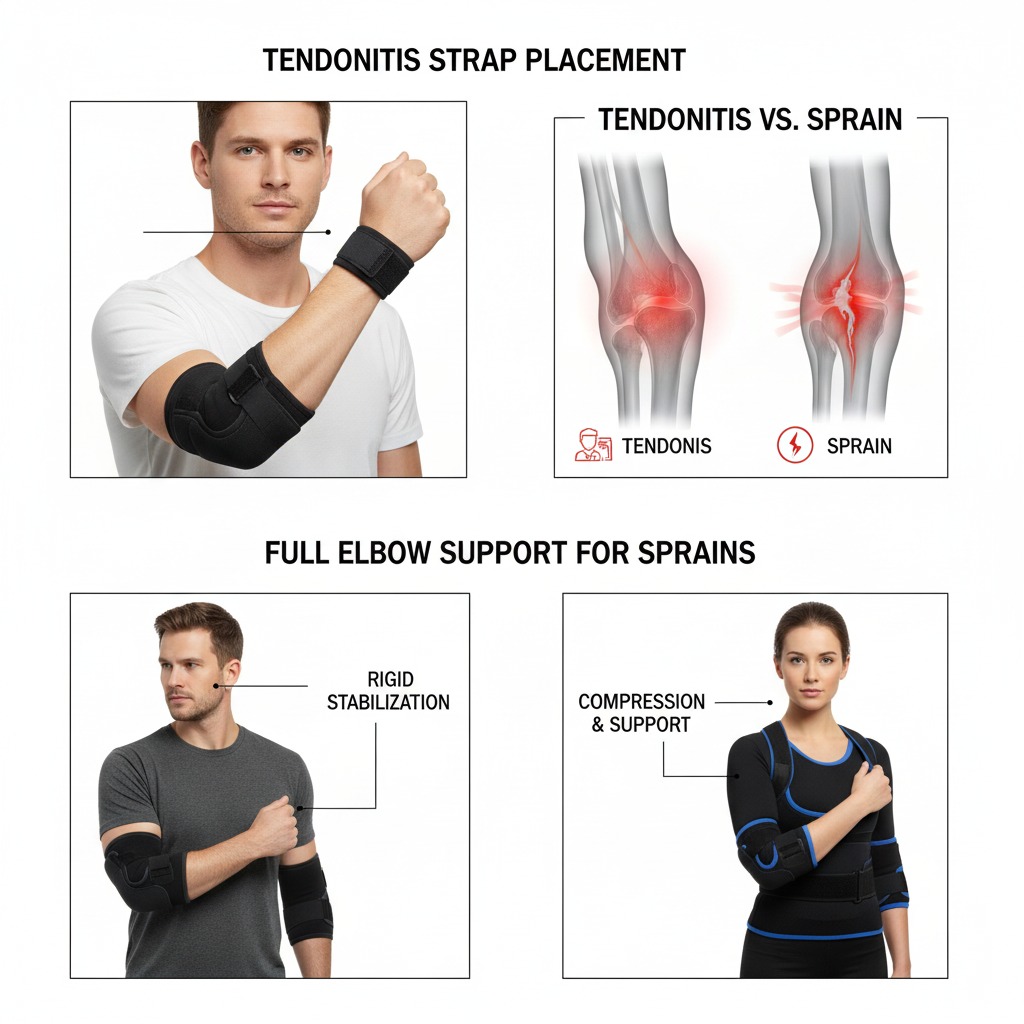Elbow Brace Basics: Understanding How to Use an Elbow Support for Tendonitis and Sprains
Elbow pain can be incredibly disruptive, making everyday tasks like lifting, typing, or even shaking hands a challenge. Whether you’re dealing with the persistent ache of tendonitis (like Tennis or Golfer’s Elbow) or recovering from a painful sprain, an elbow brace can offer much-needed support and relief. But to truly benefit, it’s essential to understand how to choose and use an elbow support correctly. This guide will walk you through the basics.
Important Disclaimer: This information is for educational purposes only. Always consult with a healthcare professional for a proper diagnosis and personalized treatment plan for your elbow pain.
Understanding Your Elbow Pain: Tendonitis vs. Sprains
While both can cause elbow pain, tendonitis and sprains affect different parts of your elbow:
- Tendonitis (e.g., Tennis Elbow, Golfer’s Elbow): This is an inflammation or irritation of the tendons that connect the forearm muscles to the outside (Tennis Elbow) or inside (Golfer’s Elbow) of your elbow. It’s typically caused by repetitive motions.
- Sprains: An elbow sprain occurs when the ligaments (the tough tissues connecting bones) around the elbow joint are stretched or torn, often due to a sudden impact or hyperextension.
How an Elbow Brace Helps
An elbow brace provides elbow support by:
- Compression: Gentle compression helps reduce swelling and inflammation around the injured area, which can alleviate pain.
- Stabilization: It limits excessive movement of the elbow joint, protecting ligaments during healing from a sprain.
- Pressure Relief (for Tendonitis): For tendonitis, some braces have a specific pad or strap that applies pressure just below the elbow joint, helping to relieve tension on the inflamed tendons.
Choosing the Right Elbow Brace
- For Tendonitis: Look for an elbow support that provides targeted compression around the forearm, just below the elbow joint. Many of these braces feature a pad or strap that applies direct pressure to the affected tendon, helping to offload stress. An elastic back brace material in some designs can also offer comfortable, consistent compression for the broader arm, though specifically for the elbow, a focused strap is key.
- For Sprains: You’ll likely need an elbow brace that offers more rigid support to limit the range of motion of the joint, protecting the healing ligaments. Your doctor will recommend the appropriate level of immobilization.
- Size and Fit: Regardless of the type, ensure the brace fits snugly but comfortably. It should not cut off circulation or cause numbness. Follow the manufacturer’s measuring instructions carefully.
Wearing Your Elbow Brace Correctly
An elbow brace is an effective tool for providing elbow support and pain relief for both tendonitis and sprains. By choosing the right type of brace and wearing it correctly, you can help your elbow heal, reduce discomfort, and get back to your daily activities with greater ease.
Ready to find relief? Explore our range of orthopedic supplies and elbow braces designed for effective support and comfort.
Conclusion
An elbow brace is an effective tool for providing elbow support and pain relief for both tendonitis and sprains. By choosing the right type of brace and wearing it correctly, you can help your elbow heal, reduce discomfort, and get back to your daily activities with greater ease.
Ready to find relief? Explore our range of orthopedic supplies and elbow braces designed for effective support and comfort.




